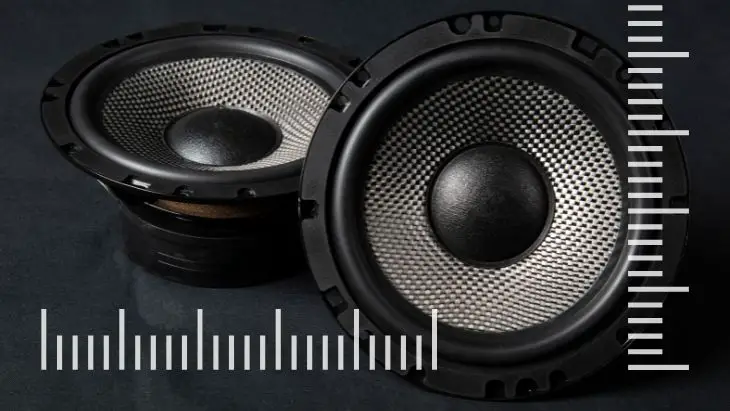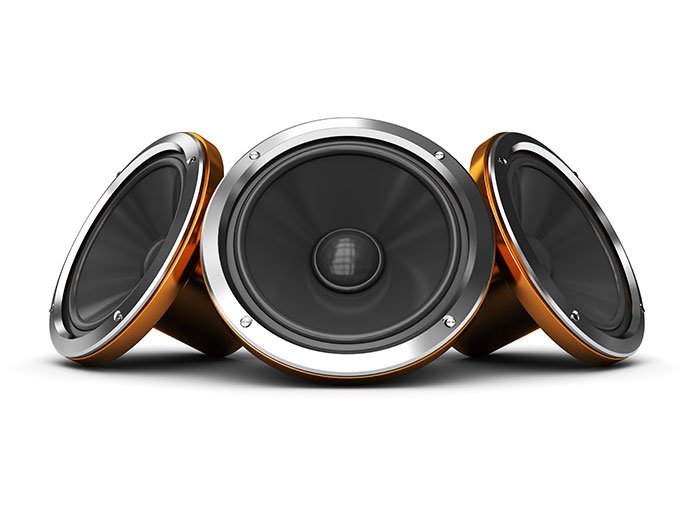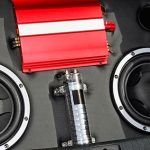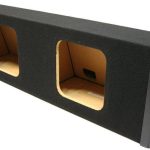Subwoofers are often confused with woofers. While both subwoofers and woofers are both designed to reproduce bass, subwoofers are technically designed to reproduce lower frequencies than woofers. Thus, the concept behind the design of subwoofers is reproducing low frequencies in the range of 20 Hz to 200 Hz. Thus, when upgrading your car stereo, you should consider adding a subwoofer to enjoy your music with enhanced bass. While all subwoofers are designed to reproduce bass, they come in different types and sizes. They also come in different types of cabinets. Here’s all you wanted to know about subwoofers.
Types of Subwoofers
Subwoofers are designed as either passive or active subwoofers. Passive subwoofers are subwoofers that require a connection to an external amplifier to reproduce bass. Subwoofers demand a lot of power to drive huge amounts of air to reproduce low frequencies. Thus, connecting a passive subwoofer to a receiver may not be ideal enough to reproduce decent bass. The passive subwoofer might actually sound distorted if it’s not fed with enough power. Thus, for a passive subwoofer to sound best, it should be connected to an external amplifier that is powerful enough to feed the subwoofer with the power it requires.
On the other hand, active subwoofers come with their own amplifier and crossover. The amplifier and crossover are built within the same subwoofer box as the subwoofer driver. Thus, the main advantage of active subwoofers is that you don’t have to connect them to an external amplifier. You can connect them directly to the receiver and enjoy deep bass. The only drawback is that you also have to connect an active subwoofer to a power source. Thus, active subwoofers demand more connections than passive subwoofers.
Cabinet Types
Subwoofers sound best when they are built in a subwoofer cabinet. These cabinets are also known as subwoofer enclosures or boxes. While active subwoofers come with a subwoofer box, passive subwoofers don’t always come with a sub-box. Thus, you’d need to build or buy one for your passive sub for it to sound better. Regardless of the subwoofer type, they come in different types of cabinets. Here’re the different subwoofer cabinet types available today:
i. Sealed Cabinets
Sealed sub boxes are an airtight type of cabinet. Just like the name suggests, they’re sealed such that they don’t have any air opening around them. Their airtight design allows for more accurate and tighter bass. These cabinets have a flat bass response and are less booming than subs in ported cabinets. Moreover, subs built-in sealed cabinets are better in power handling than those in ported cabinets.
However, subs in sealed boxes demand more power such that they need to be connected to an amplifier that is powerful enough to feed them with enough power.
ii. Ported Cabinets
Another type of subwoofer cabinet is ported sub boxes. Ported cabinets come with a vent known as a port. The vent is either built in front of the box or at the side. The vent works by reinforcing the subwoofer’s low-frequency response. Thus, with a ported cabinet, you’re assured of enhanced bass output than from a sealed box. Ported cabinets are ideal for hard-driving audio such as rock music. They’re ideal for reproducing deeper and louder bass than subs in sealed boxes. However, ported cabinets are often larger in size than sealed ones to reproduce deeper and louder bass.
iii. Bandpass Cabinets
Bandpass cabinets are less common subwoofer boxes. These boxes are specially designed for the best bass response. They comprise a dual-box design that has a sealed chamber and a ported chamber. In this type of design, sound waves emerge from the vented chamber. The design allows for louder bass within a narrower frequency range. Thus, bandpass cabinets are more efficient in bass reproduction, making them sound more booming. These cabinets are ideal for aggressive bass. However, they’re larger than other cabinet types.
Subwoofer Sizes

Subwoofers come in different sizes. Each size suits different needs. Their sizes are measured in diameter. The most common subwoofer sizes are:
i. 8-inch Subwoofers
Eight-inch subwoofers are the most standard subwoofer size and the smallest. This subwoofer size is ideal for bass enthusiasts who want to add bass but have limited space to install a larger subwoofer. Thus, if the space in your car is limited and you still want to add some bass, an 8-inch subwoofer will be your best bet. They deliver acceptable bass but are not ideal enough to win a bass competition.
ii. 10-inch Subwoofers
If you need a more noticeable bass upgrade, then a 10-inch subwoofer would be good enough. 10-inch subwoofers are ideal for punchy bass with more clarity. While they wouldn’t necessarily make a statement, they’re ideal for most bass needs.
iii. 12-inch Subwoofers
Bass enthusiasts seeking to make a statement with booming bass should consider a 12-inch subwoofer. This subwoofer size is very large. Thus, it’s only ideal for installation where space is not an issue. Due to their large size, they’re mostly installed in the trunk.
iv. 15-inch Subwoofers
Besides 8, 10, and 12-inch subwoofers, bass lovers who want to enjoy deeper, louder, pounding, and earthshaking bass can go ahead and buy a 15-inch subwoofer. However, a 15-inch subwoofer may not fit in most cars. It would take much of the trunk space. Thus, it’s only ideal in trunks that are very spacious.
Bass Management in Subwoofers
Getting a home theatre experience with a subwoofer is only possible when the sound frequencies are distributed properly. This is where bass management comes in. Bass management in subwoofers is all about ensuring that the subwoofer and main speakers are fed with the correct frequencies. For instance, bass management ensures that the subwoofer is only fed with low frequencies to reproduce cleaner bass. Practical implementation of bass management can be done manually or automatically. In a manual implementation, you’ll set up the receiver crossover configurations manually whereas, in an automatic implementation, you’ll pre-defined configurations options on the receiver.
In a simple 2.1 setup, you’ll have one subwoofer and two satellite speakers. In this setup, the bass management feature is usually built in the subwoofer where the crossover filters high frequencies and sends them to the satellite speakers, and the low frequencies are left for the subwoofer. In a 5.1 setup, you’ll have one subwoofer and five satellite speakers. Here, the bass management feature is usually done from the surround sound and not the subwoofer. In this case, the five satellite speakers go through a low pass filter where low frequencies are filtered out and sent to the subwoofer.
How to Get Subwoofer Alignment Right
Getting a home theatre experience with a subwoofer also demands proper subwoofer alignment with the main speakers. This is where the practical placement of a subwoofer and the main speakers comes in. Practical placement of a subwoofer and the main speakers is all about proper alignment of the subwoofer and the main speakers to ensure they’re in phase with each other. Some subs come with an inbuilt phase adjustment feature. This feature assists in correcting any phase differences between the sub and main speakers.
If you’re setting up a subwoofer in your home, start by positioning the sub in the desired listening position and set the best filter and volume levels. Change the listening position while listening to some music until you feel that the bass is natural and consistent. If you’re setting up one subwoofer, it’s best to place it in front of the listening position instead of behind. It should be kept away from the corners. It should be at least in front of a wall but not too close to the wall and not at the center of the room.
Tuning Your Subwoofer

It’s quite important to tune your subwoofer properly for the best bass without damaging it. You need to set the gain and crossover filters properly to ensure that the subwoofer sounds right without exceeding any setting. Improper subwoofer tuning can lead to poor bass response or even blow the subwoofer. When tuning your subwoofer, make use of your ears to know when it sounds best or when to adjust it further just in case something doesn’t sound right.
Tuning the subwoofer is best done upon locating the best listening position. Upon finding the best listening position, you can adjust the subwoofer level. In most receivers, the gain, crossover filter, and phase or delay controls tend to be interactive. Thus, you may need to try different combinations of the settings before getting the best sounding level. For instance, you may get the settings for the highest and deepest bass right but you feel something is not sounding right with the crossover filter. In this case, adjust the crossover filter until the bass response sounds smoother.
What Can Make A Subwoofer Blow?
Subwoofers usually blow due to overpowering, under-powering, and clipping. Over-powering a subwoofer is when you power a subwoofer with a power level beyond what it can withstand such that the coil burns up. Overpowering a subwoofer often happens when you have a powerful amplifier and set the gain and volume levels all the way up for a prolonged period of time. Thus, avoid turning the volume up beyond what the subwoofer can take.
Subwoofers also blow up as a result of clipping. Clipping occurs when a subwoofer receives current without any coil movement. Since the coil is not moving, it doesn’t cool. The coil ends up overheating and burns up. Clipping also occurs when the subwoofer receives extremely clipped waveforms such that the subwoofer coil and cone attempt to move at limitless speed as the direction of movement changes. Since such coil and cone movement is impossible, the coil or cone burns up. Clipping can be noticed when the subwoofer makes a hissing or crackling sound.
A subwoofer can also blow as a result of under-powering it. Under-powering a subwoofer is when you feed it with a weak signal. When a sub is underpowered, it distorts. The distortion ends up blowing the subwoofer.
Final Thoughts
Now that you know everything about subwoofers, you’ll find it easier to make decisions regarding subwoofers. With this information in mind, you’ll know the best subwoofer type, size, and cabinet type to choose from during your stereo upgrade. Moreover, to get the best bass response, you need to know concepts such as bass management and proper subwoofer alignment.
Michael Evanchuk is a San Francisco-based sound engineer with 20 years’ experience installing, troubleshooting, and repairing commercial, automotive, and household sound equipment. Evanchuk owns an auto stereo center, where he offers highly competitive car audio installation and repair services. He has written dozens of articles on different sound engineering topics, all of which have been published in leading journals, blogs, and websites.





